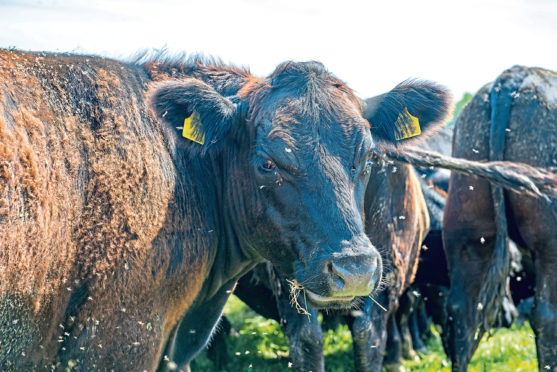Summer mastitis cases have rocketed this year after higher than average numbers of flies were reported, leading a beef cattle expert to highlight the importance of checking all cattle.
While dry cows are most at risk, Scotland’s Rural College beef consultant, Basil Lowman, says the levels of infection are so high this year cases are being reported in heifers and even an occasional stock bull and steers.
Although cows with calves are not considered to be at risk of summer mastitis, Dr Lowman said they can become susceptible within two to three months of calving, when they dry themselves off by stopping the calf suckling.
“The most important thing to do is to graze susceptible animals in exposed fields away from trees and open water where flies breed,” he said.
“Animals away from the main group, hungry calves, and swollen teats and udders are obvious signs of a problem which needs immediate investigation, as the earlier the problem is identified, the greater the chance of saving the area.”
He reminded producers that once a case of summer mastitis occurs, the level of infection carried by flies increases dramatically as they land on an infected area and then fly off to another animal.
“The best way to avoid this is to bring all infected cows indoors, which will be necessary in any case if they are to be treated,” said Dr Lowman. Preventative measures include using teat sealants which are supplied by vets; Stockholm tar, an old-fashioned remedy with the tar forming a physical barrier over the end of the teat; insecticide ear tags which, for best effect, need to be applied in early spring to kill as many flies as possible while numbers are relatively low; and garlic.
The naturally-occurring sulphur compounds in the ingredient seep out through pores and sweat glands, acting as a repellent to flies and other biting insects.
